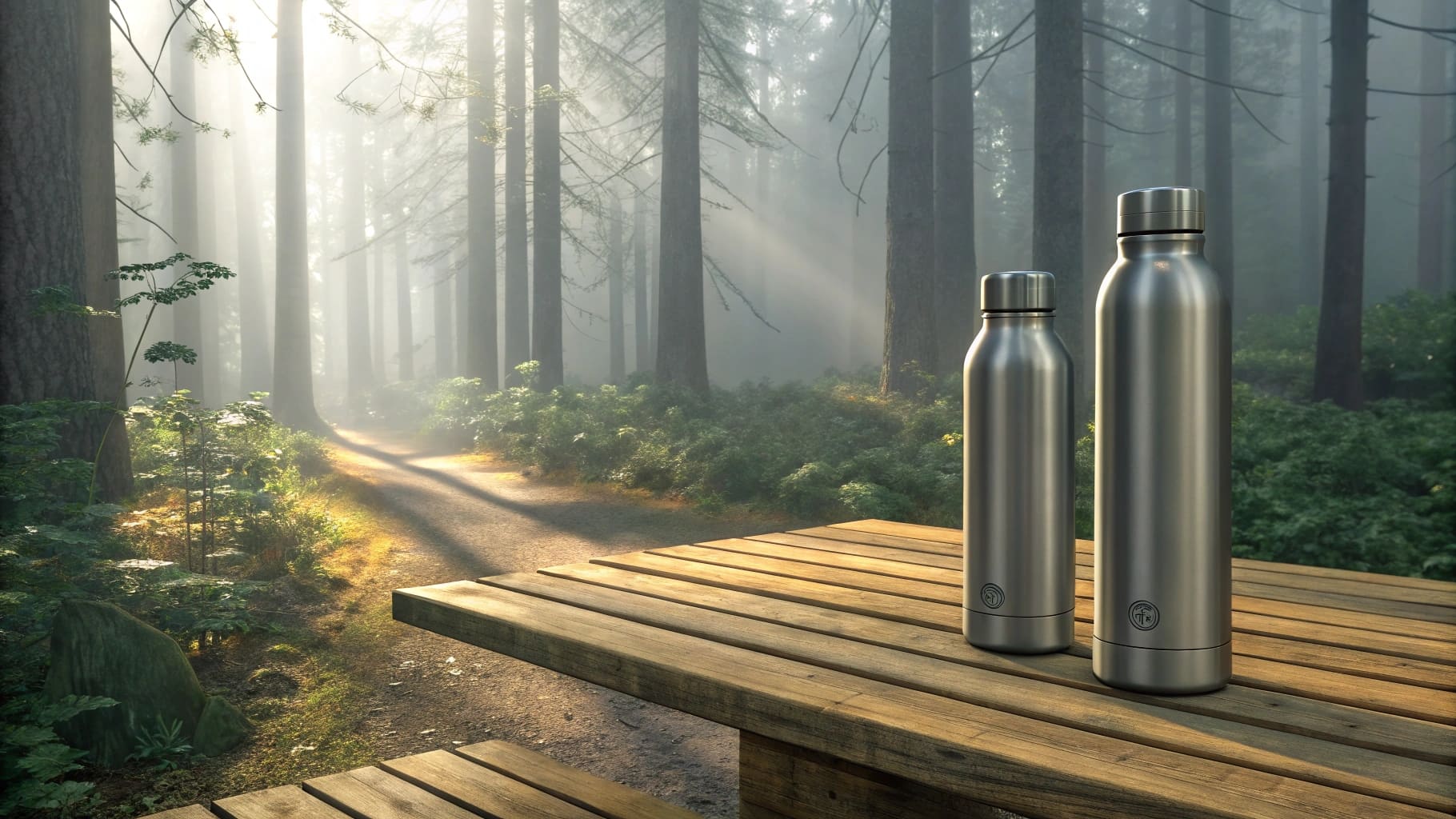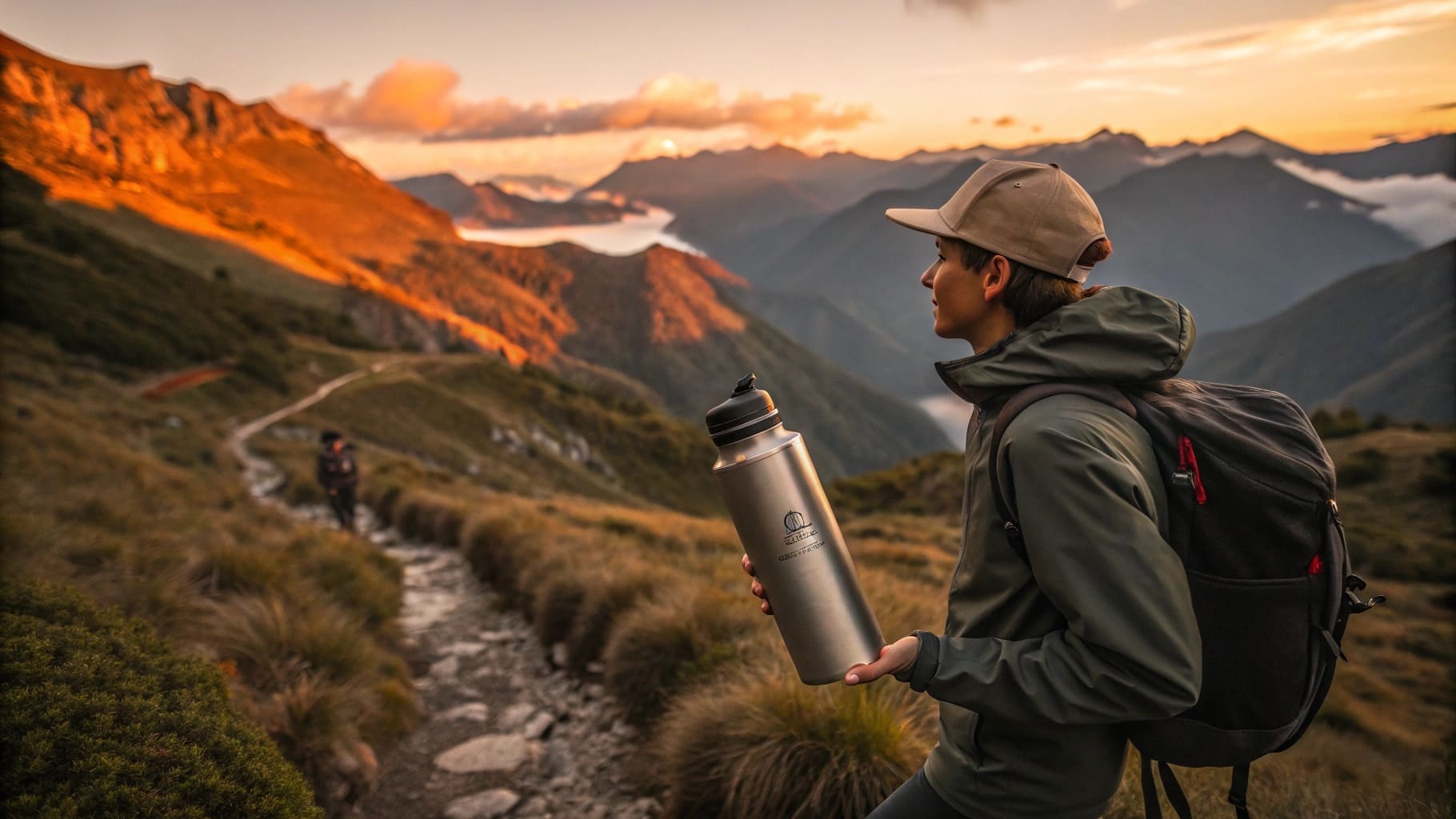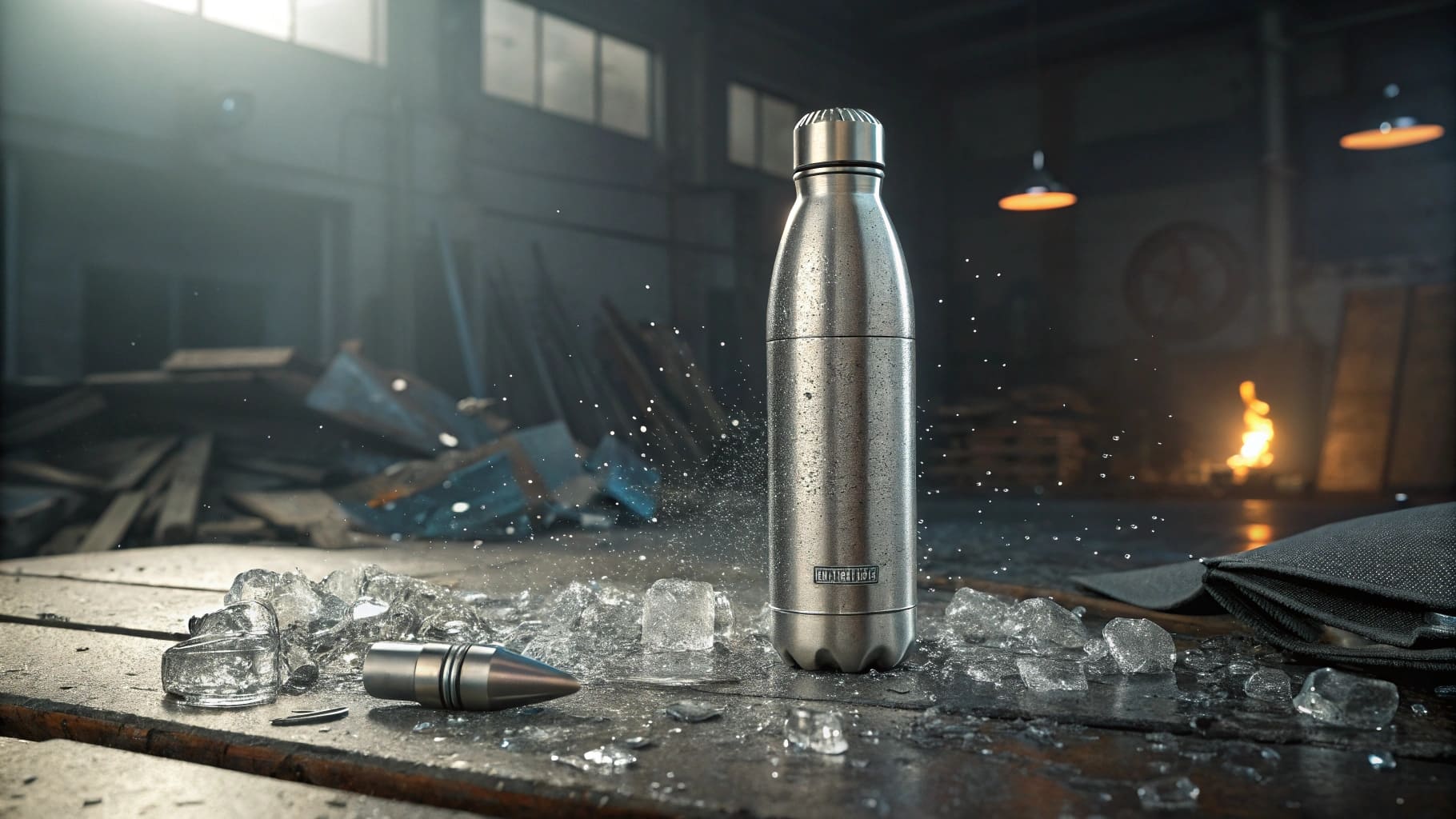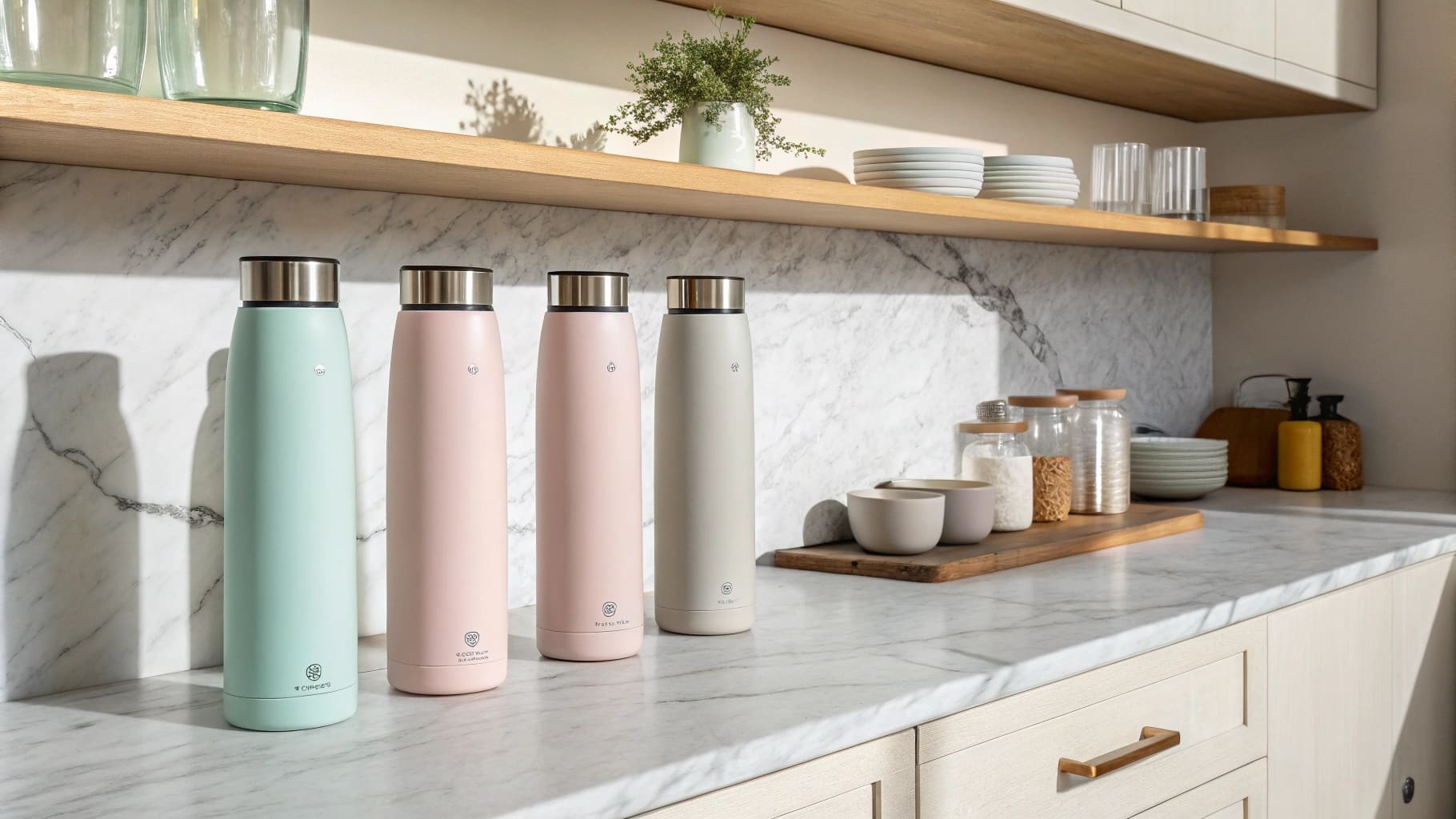Lukewarm drinks are a real pain. That warm sip is so disappointing when you expect cold. Learn how stainless steel bottles keep drinks perfectly cold for hours.
Stainless steel bottles keep drinks cold using double-wall construction. A vacuum between these walls acts as a powerful insulator. This design greatly reduces heat transfer, keeping your beverage refreshingly chilled for a long time.

It's pretty amazing how a simple bottle can do so much, isn't it? But you might still have a few more questions. Perhaps you're wondering if this technology really works for all kinds of cold drinks, or just how long that chill can last. Let's explore some common questions people ask about these fantastic bottles. We'll look closer at what makes them so good at their job of keeping things cool.
Do Stainless Steel Bottles Really Keep Drinks Cold For Long?
Want icy drinks all day? Wonder if stainless steel bottles live up to the promise? Let's find out their true cold-keeping power.
Yes, high-quality insulated stainless steel bottles1 excel at keeping drinks cold. Many can maintain cold temperatures for up to 24 hours. Some designs can even keep things chilly for longer, depending on the specific bottle and the outside temperature.

The claim of keeping drinks cold for 24 hours, or sometimes even longer, isn't just marketing talk. It's a result of the clever design I mentioned earlier. When a bottle is well-made, it truly performs. As someone who supplies these bottles wholesale, I've seen firsthand how important this feature is for businesses.
My client, Mark Shenng from Canada, is a company owner who sources stainless steel water bottles. He's very clear about his needs. He often tells me, "Aries, my customers in Canada expect their cold drinks to stay cold, whether they're hiking in summer or just at their desk. The bottle must perform." He rebrands these bottles, so the quality reflects directly on his business. This is why at Icobottle, we put a lot of effort into ensuring our bottles offer reliable thermal performance.
What Affects How Long Drinks Stay Cold?
Several things can change how long your drink stays cold in a stainless steel bottle:
- Quality of the Vacuum: The better the vacuum seal2 between the two walls, the less heat can get in or out. This is crucial.
- Starting Temperature: If your drink is already very cold, it will stay cold longer.
- Ice Content: Adding ice makes a big difference. The more ice, the longer the chill.
- Ambient Temperature: If it's a hot day, the bottle has to work harder to keep the contents cold compared to a cool day.
- How Often You Open It: Every time you open the lid, some cold air escapes and warm air can enter. So, fewer openings mean longer cold.
- Lid Design: A well-insulated and tightly sealing lid is also very important to prevent heat exchange.
Here’s a simple table to show these factors:
| Factor | Impact on Cold Retention |
|---|---|
| Initial Drink Temperature | Colder start = stays cold longer |
| Ice Content | More ice = stays cold longer |
| Lid Seal Quality | Tight seal = better insulation |
| Ambient Temperature | Hotter outside = warms up faster |
| Frequency of Opening | Less opening = stays cold longer |
For procurement officers or startup bosses thinking about adding these bottles to their product line, understanding these points helps in selecting the best options for their customers. It’s not just a bottle; it’s a promise of a refreshing drink.
What's The Secret Behind How Stainless Steel Bottles Are Insulated?
You know they work, but it might seem like a bit of magic. How can a metal bottle stop heat so effectively? Let's uncover the smart engineering inside.
Stainless steel bottles are insulated primarily through their double-wall construction3. A vacuum is sealed between these walls. This vacuum dramatically reduces heat transfer by convection and conduction, effectively isolating the contents inside.

The main reason these bottles are so good at keeping drinks cold is a combination of smart design and basic physics. It’s not magic, but it’s very clever. Let's break down the key parts.
The Core: Double-Wall Construction
Imagine you have two stainless steel bottles, one slightly smaller than the other. Now, picture placing the smaller bottle inside the larger one, with a small gap all around between them. This is basically what "double-wall construction" means. Both the inner and outer walls are typically made from high-quality, food-grade stainless steel. I always stress the importance of using 18/8 or 304-grade stainless steel4 to my clients like Mark. This type of steel is excellent because it's strong, resists rust, and, very importantly, doesn't leave any metallic taste in the drink. This is a key selling point for end-users who are sensitive to quality.
The Key: Creating the Vacuum
The real star of the show is the space between these two walls. During the manufacturing process, we use powerful pumps to remove almost all the air from this gap. When you remove the air, you create a vacuum. A vacuum is an area with very, very few air molecules.
Why is this vacuum so important? Well, heat usually travels in a few ways:
- Convection: This is when heat moves through fluids, like air or water. If there's no air (or very little air) between the bottle walls, heat can't move easily by convection from the warm outside to your cold drink inside.
- Conduction: This is when heat moves through direct contact, like when you touch a hot pan. Stainless steel itself doesn't let heat pass through it very quickly (it has low thermal conductivity). The vacuum further reduces conduction because there are hardly any molecules to pass the heat energy along. The only places where the inner and outer walls touch are usually at the very top, where they are welded together to seal the bottle. This small contact area means very little heat can conduct through.
Why This Matters for Wholesale Buyers
For my B2B customers – the procurement officers and startup owners – understanding this insulation method is vital. It’s the core technology that delivers the main benefit: temperature retention. When they are looking for products to build their brand around, like Mark does in Canada, a bottle with superior vacuum insulation means their customers will be happier. Happy customers lead to good reviews and repeat business. I once explained this technology to a new startup founder who was looking for an edge. I told her, "Focus on the proven science. Superior insulation is a clear, tangible benefit that customers appreciate and are often willing to pay a bit more for." It’s a quality feature that speaks for itself.
Can You Count On Stainless Steel To Keep Ice From Melting Quickly?
Adding ice to your drink, only for it to melt in an hour? That really defeats the purpose of using an insulated bottle! Let's see if stainless steel can truly preserve your ice.
Yes, insulated stainless steel bottles are excellent for keeping ice frozen for many hours. The same vacuum insulation that keeps drinks cold effectively prevents the ice from melting quickly, so your drink stays icy.

It's true, these bottles are fantastic at keeping ice from turning into water too fast. This is a big reason why people love them, especially when they want that extra-chilled drink for a long time.
Why Ice Lasts Longer
The science is exactly the same as for keeping drinks cold. That amazing vacuum between the two stainless steel walls acts like a strong barrier. It stops heat from the outside environment from reaching the ice inside your bottle. Heat energy needs something to travel through. Since the vacuum has almost no air, it's very difficult for the outside warmth to get in and melt your ice. So, the ice stays solid much, much longer than it would in a regular glass or a single-wall plastic bottle. I've had clients tell me they've still found ice in their Icobottle products even the next day!
Tips for Maximum Ice Retention
If you want to get the absolute best performance and keep your ice frozen for the longest possible time, here are a few simple tips I often share:
- Pre-chill Your Bottle: Before you put in your ice and drink, fill the bottle with some cold water (and maybe a few ice cubes if you have them) for about 5-10 minutes. Then, pour out this water and add your fresh ice and beverage. This cools down the inner wall of the bottle, so it doesn't melt your ice.
- Use Plenty of Ice: The more ice you start with, the longer it will take for all of it to melt. A bottle full of ice will stay colder for longer than a bottle with just a few cubes.
- Add Liquid After Ice: Put your ice in the bottle first, then pour your drink over it.
- Keep the Lid On Tight: Make sure the lid is screwed on properly and tightly. This prevents warm air from getting in and cold air from escaping. The lid itself is often insulated too in good quality bottles.
Customization and Client Needs
For my B2B clients, especially those who are building a brand like Mark in Canada, the ability of a bottle to keep ice solid is a significant selling point. Mark mentioned that his customers, even in a generally cooler country like Canada, love super-chilled drinks, especially for sports, at the gym, or during long days at the office. They want to be sure that the ice they put in their bottle in the morning will still be there in the afternoon.
We at Icobottle even discuss lid designs with clients. Some lid types offer better seals than others, which can impact ice retention. For businesses in hotter regions of America or Europe, this feature is even more critical. They want to assure their customers that their branded bottle will deliver an icy-cold drink on a scorching day. Sometimes, bottles also have a thin copper layer on the inside of the outer wall (within the vacuum area). This copper can help reflect radiant heat (another way heat travels) away from the cold contents, further helping to preserve ice. It’s another small detail that contributes to overall performance.
Conclusion
Stainless steel bottles use smart vacuum insulation. This design is very effective. It keeps your drinks cold and your ice frozen for many hours.
-
Explore the advantages of insulated stainless steel bottles to understand their effectiveness in keeping drinks cold for extended periods. ↩
-
Discover why a quality vacuum seal is essential for keeping your drinks cold and how it impacts overall bottle performance. ↩
-
Understanding double-wall construction helps you appreciate the engineering behind effective insulation in bottles. ↩
-
Learn about the advantages of high-quality stainless steel, crucial for durability and taste in drinkware. ↩

